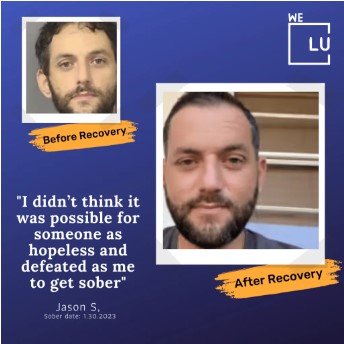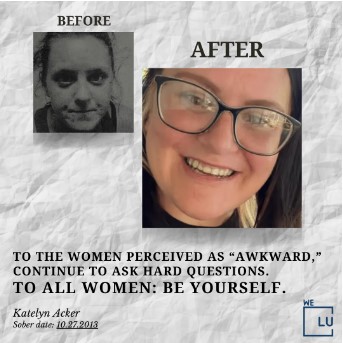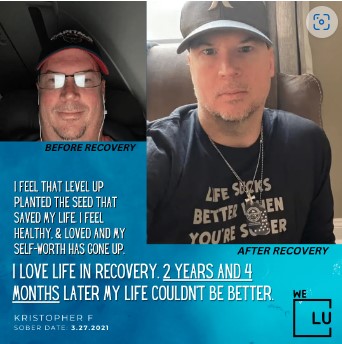Understanding carfentanil risks
If you or a loved one are grappling with carfentanil dependence, finding the right carfentanil rehab program can feel overwhelming. Carfentanil is an ultra-potent opioid—approximately 100 times stronger than fentanyl—and was originally used as a tranquilizer for large animals. Its potency places you at exceptionally high risk for overdose, rapid tolerance buildup, and intense withdrawal symptoms.
Defining the drug and potency
Carfentanil belongs to a class of synthetic opioids that includes fentanyl analogs. Even a tiny amount can depress breathing severely, leading to life-threatening complications. Because of its strength, standard opioid tests may not detect carfentanil, making accurate diagnosis more challenging.
Unique challenges of dependence
- High overdose potential, requiring immediate medical attention
- Rapid development of physical tolerance and psychological craving
- Severe withdrawal symptoms that can peak within days and persist for weeks
- Limited public awareness and fewer targeted treatment protocols
Recognizing these unique challenges is the first step in seeking comprehensive care tailored to your needs.
Exploring treatment options
A tailored treatment program for carfentanil addiction often combines medication, behavioral therapies, and emerging scientific advances. This integrated approach ensures you receive comprehensive care and the support necessary for lasting recovery.
Medication-assisted treatments
Medication-assisted treatment (MAT) remains the standard of care for opioid use disorders. FDA-approved options include:
- Methadone – A long-acting full opioid agonist that controls withdrawal and cravings without producing euphoria
- Buprenorphine – A partial agonist that balances brain chemistry and blocks the effects of other opioids; available for patients aged 16 and older [1]
- Naltrexone – An opioid antagonist that prevents opioid effects and reduces relapse risk
When taken as prescribed, these medications restore stability to brain circuits disrupted by addiction and support long-term recovery.
Behavioral therapies
Complementing MAT, behavioral interventions address the psychological and emotional aspects of dependence:
- Cognitive-behavioral therapy (CBT) helps you identify and change negative thought patterns that trigger carfentanil use
- Contingency management offers incentives for meeting treatment goals, reinforcing healthy behaviors
- Motivational interviewing deepens your commitment by exploring personal motivations for change
These evidence-based therapies foster coping strategies and resilience.
Emerging immunotherapeutics
Researchers are exploring novel treatments aimed at neutralizing synthetic opioids before they reach brain receptors. Programs under the NIH HEAL Initiative are developing:
- Anti-opioid vaccines to generate antibodies that bind carfentanil in circulation
- Monoclonal antibodies that block the drug’s effects and reduce overdose risk
These promising approaches may one day complement existing therapies, offering another layer of protection [2].
Get Help. Get Better. Get Your Life Back.
Searching for Accredited Drug & Alcohol Rehab Centers Near You? Or Mental Health Support?
Even if you have failed previously, relapsed, or are in a difficult crisis, we stand ready to support you. Our trusted behavioral health specialists will not give up on you. Call us when you feel ready or want someone to speak to about therapy alternatives to change your life. Even if we cannot assist you, we will lead you wherever you can get support. There is no obligation. Call our hotline today.
FREE Addiction Hotline – Call 24/7Comparing rehab programs
Different rehabilitation settings match varying needs, resources, and levels of care. Reviewing the options can help you select a program aligned with your recovery goals.
| Program type | Setting | Length | Level of support |
|---|---|---|---|
| Residential rehab program | Live-in facility | 30–90 days | 24/7 medical and therapeutic care; structured daily schedule [3] |
| Inpatient rehab program | Hospital or clinic | 14–60 days | Intensive medical supervision; ideal for severe dependence [4] |
| Outpatient and low barrier care | Community clinics or offices | Flexible | Regular therapy visits; allows work/school commitments |
Residential rehab program
In a live-in setting, you immerse yourself in recovery, with continuous access to medical staff, therapists, and peer support. This environment removes triggers from daily life and promotes consistent routines.
Inpatient rehab program
If your withdrawal symptoms are severe or you have co-occurring health issues, an inpatient facility offers round-the-clock monitoring. You benefit from medical detox services and immediate intervention if complications arise.
Outpatient and low barrier care
For those with milder dependence or strong home support, outpatient models provide therapy and medication management while you continue daily responsibilities. Low barrier care reduces restrictions on program entry, improving access for more people [5].
Navigating detox phases
Detoxification marks the first step in your recovery journey. Managing this phase safely sets the foundation for longer-term treatment.
Medical detox benefits
Under medical supervision, withdrawal symptoms—such as nausea, muscle aches, anxiety, and insomnia—are controlled with medications and supportive care. This reduces risk of complications and helps you complete detox with greater comfort.
Comfortable detox environments
Choosing a facility with a comfortable drug detox center means you receive therapies like massage, guided relaxation, and nutritional support. These holistic touches can alleviate discomfort and promote early healing.
Managing acute withdrawal
During the peak withdrawal period (2–5 days after last use), you may experience intense cravings. Your care team can adjust dosing of MAT or prescribe non-addictive medications to address specific symptoms, ensuring safety and dignity throughout.
Embracing holistic therapies
Recovery from carfentanil involves more than stopping use. Incorporating mind-body practices and supportive interventions helps restore overall wellness.
Cognitive-behavioral therapy
CBT teaches you to recognize high-risk situations and reframe unhelpful thoughts. Through structured sessions, you build problem-solving skills and relapse prevention strategies tailored to your experience.
Contingency management
By rewarding milestones—such as attending sessions or passing drug screenings—contingency management reinforces positive behavior. Small incentives can motivate you during challenging moments.
Mind-body practices
Integrating yoga, meditation, or acupuncture supports stress reduction and emotional regulation. These practices complement medical treatment by engaging your innate capacity for healing.

Get Your Life Back
Find Hope & Recovery. Get Safe Comfortable Detox, Addiction Rehab & Mental Health Dual Diagnosis High-Quality Care at the We Level Up Treatment Centers Network.
Hotline (877) 378-4154Building support networks
Recovery thrives in a community of understanding and encouragement. Developing a strong support network safeguards you against isolation and relapse.
Peer and family involvement
Group therapy and family counseling help you and your loved ones communicate openly about addiction’s impact. Shared experiences foster empathy and strengthen your safety net.
Integrated mental health care
Co-occurring disorders—like depression or anxiety—often accompany substance use. An integrated approach ensures you receive both addiction treatment and mental health services, reducing the chance of missed diagnosis [6]. If you need specialized support, consider a nj dual diagnosis center.
Aftercare and relapse prevention
Long-term recovery plans often include sober living homes, 12-step groups, or peer recovery coaches. Ongoing check-ins and support groups remind you that you are not alone on this path.
Planning lasting recovery
Sustaining recovery requires clear goals, resources, and regular assessment. A personalized roadmap guides you through each stage.
Individualized aftercare plans
Your care team will help you develop a plan that may include:
- Continued MAT or tapering schedule
- Scheduled therapy or support group meetings
- Vocational counseling and life skills workshops
Community resources and follow-up
Local recovery centers, faith-based groups, and online forums offer ongoing encouragement. Staying connected to these resources helps you navigate future challenges.
Measuring progress and milestones
Tracking achievements—such as clean days, improved health markers, or restored relationships—builds confidence. Regular reviews with your care providers allow adjustments and celebrate your successes.
Taking the next step
Healing from carfentanil is a journey that demands comprehensive care, compassion, and commitment. Whether you choose a residential addiction treatment setting, an inpatient rehab program, or outpatient services, the most important step is asking for help. You deserve a supportive environment where individualized plans and evidence-based therapies pave the way to lasting recovery. Reach out today to explore your options and begin reclaiming your life.
References
- (National Institute on Drug Abuse)
- (NIH)
- (residential rehab program)
- (inpatient rehab program)
- (SAMHSA)
- (NIDA)
Experience Transformative Recovery at the We Level Up Treatment Center.
See our authentic success stories. Get inspired. Get the help you deserve.



Start a New Life
Begin with a free call to an addiction & behavioral health treatment advisor. Learn more about our dual-diagnosis programs. The We Level Up treatment center network delivers various recovery programs at each treatment facility. Call to learn more.
- Personalized Care
- Caring Accountable Staff
- Comfortable Amenities
- Licensed & Accredited
- Renowned w/ 5-Star Reviews